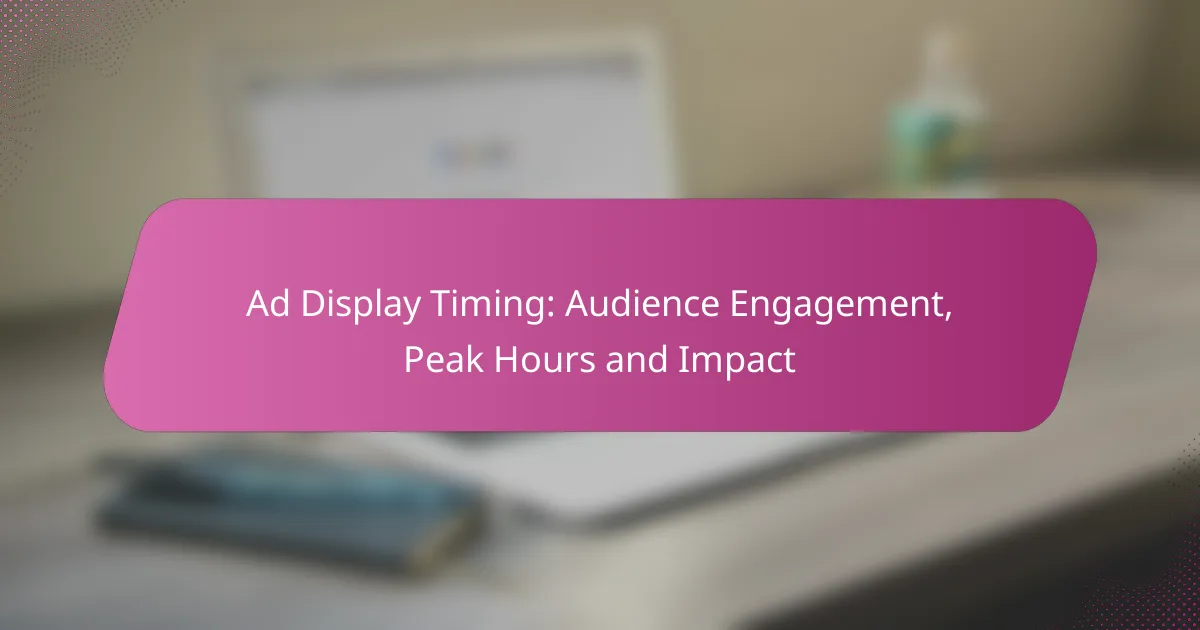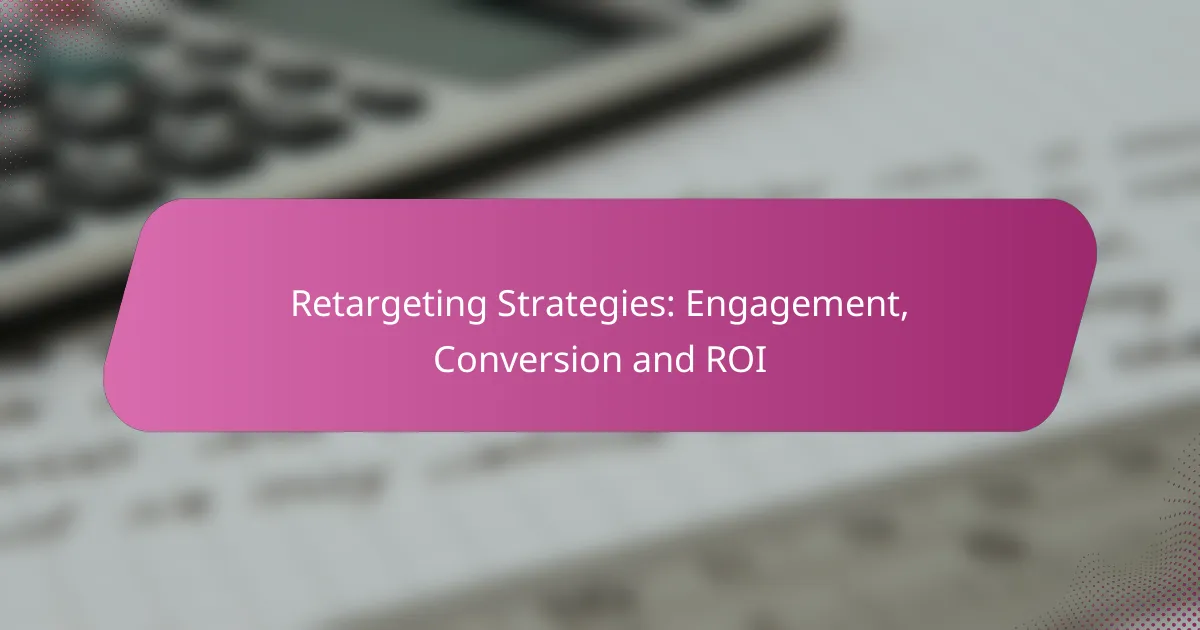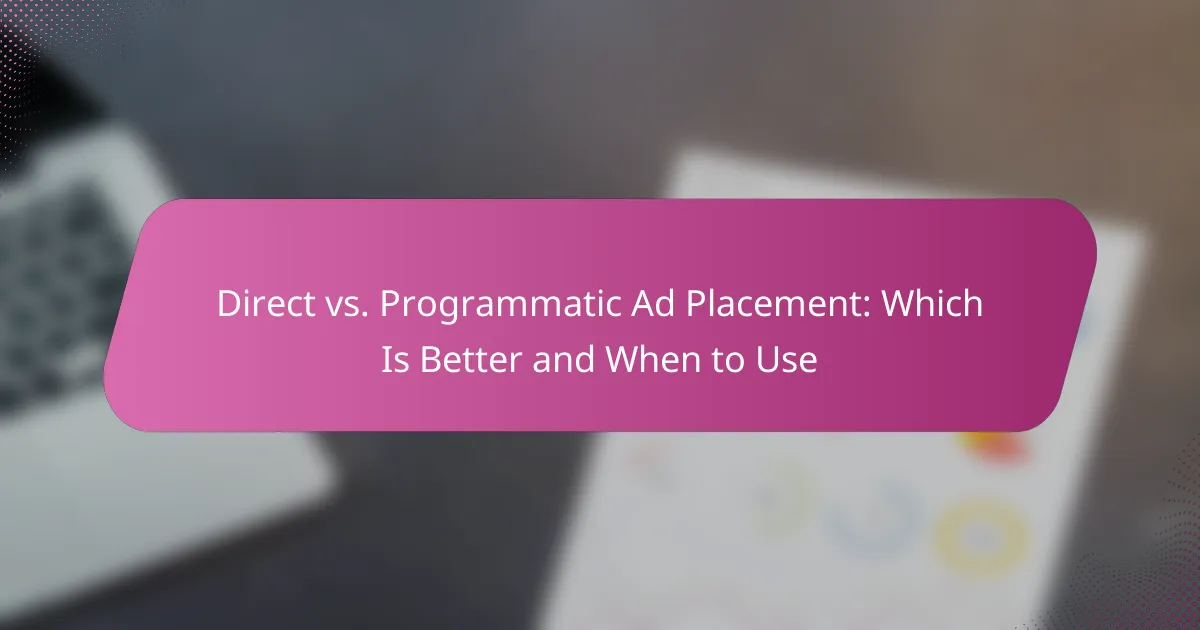Effective ad display timing is essential for maximizing audience engagement and ensuring that advertisements reach users during their peak online activity. By analyzing local behaviors and understanding the fluctuations in user routines, advertisers can strategically position their ads to enhance performance and impact. Tailoring ad timing to align with audience demographics and seasonal trends further boosts the effectiveness of advertising campaigns.
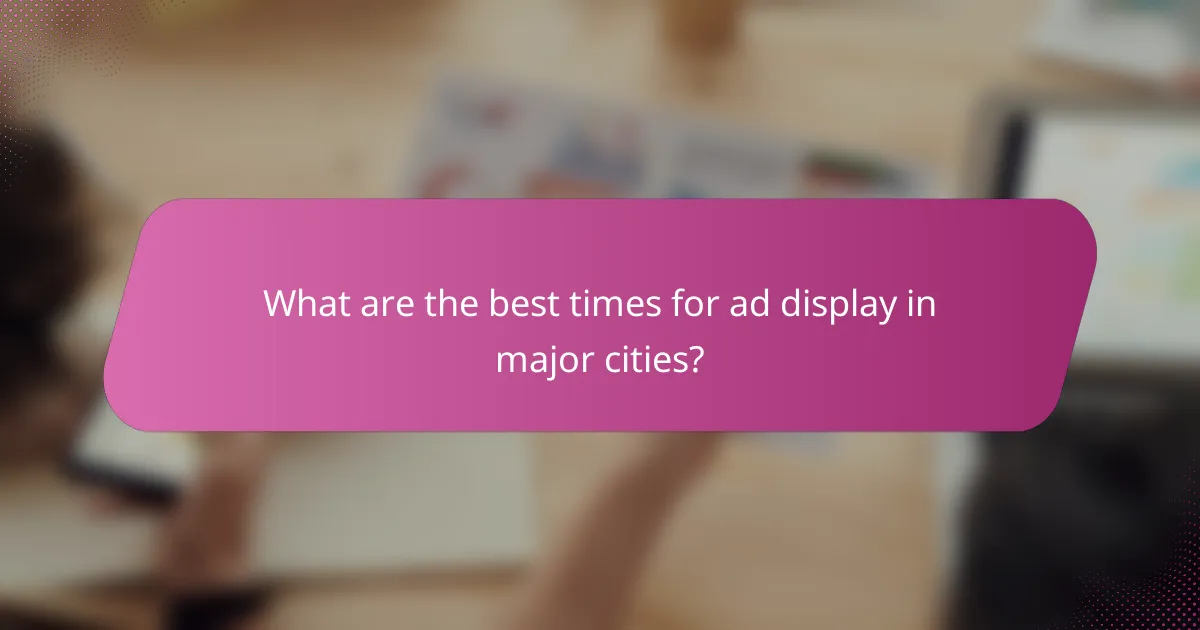
What are the best times for ad display in major cities?
The best times for ad display in major cities often align with peak online activity periods, typically during weekday evenings and weekends. Understanding local audience behaviors is crucial for maximizing engagement and ad effectiveness.
Peak hours for audience engagement
Peak hours for audience engagement generally occur during weekday evenings, around 6 PM to 9 PM, when many users are unwinding after work. Additionally, weekends, especially Saturday mornings and afternoons, tend to see higher online traffic as people have more leisure time.
In major cities, these trends can vary slightly based on local culture and lifestyle. For instance, urban areas with a vibrant nightlife may experience increased engagement later in the evening compared to more suburban regions.
Optimal timing strategies for display ads
To optimize display ads, consider scheduling them to coincide with identified peak hours. Use analytics tools to track user activity and adjust your ad placements accordingly. Testing different time slots can reveal specific patterns unique to your target audience.
Additionally, consider employing a staggered approach by displaying ads at various times throughout the day to capture different segments of your audience. Avoid running ads during late night hours unless targeting specific demographics known to be active during those times.
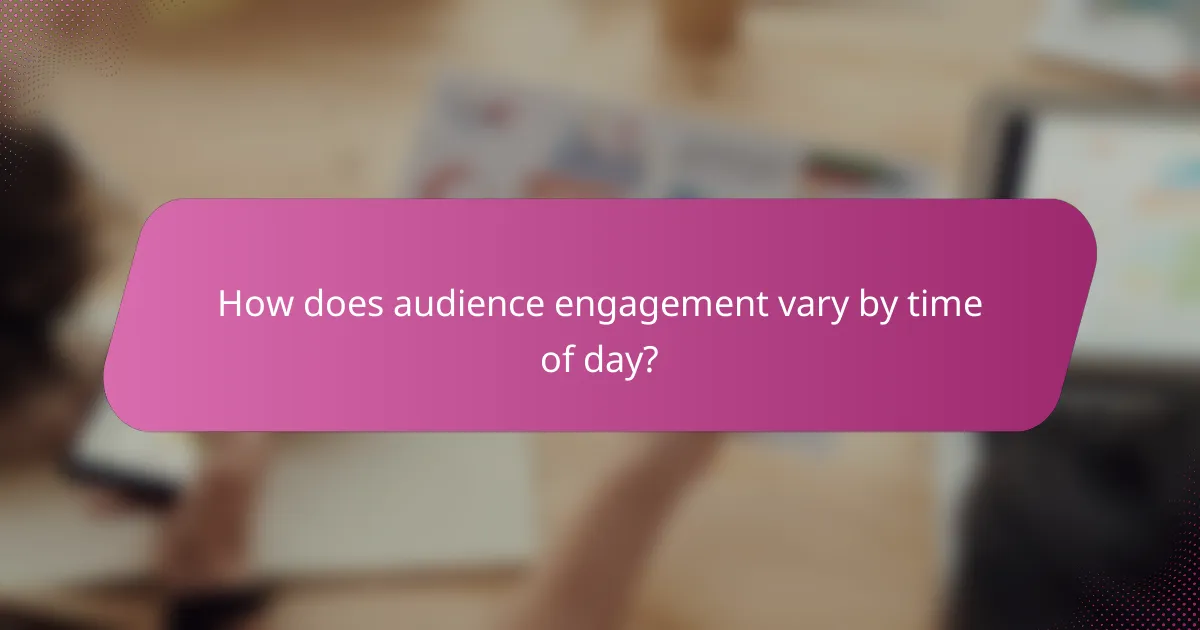
How does audience engagement vary by time of day?
Audience engagement fluctuates throughout the day, influenced by factors such as user routines and peak online activity times. Understanding these variations can help optimize ad display timing for better performance and reach.
Morning vs. evening engagement rates
Engagement rates typically differ between morning and evening, with many users more active during specific hours. Mornings often see a spike in engagement from around 7 AM to 9 AM, as people check their devices before starting their day. In contrast, evening engagement generally peaks between 7 PM and 10 PM, when users unwind and browse online.
To maximize ad visibility, consider scheduling campaigns to align with these peak hours. For instance, ads targeting professionals may perform better in the morning, while those aimed at leisure activities could be more effective in the evening.
Impact of lunch hours on ad performance
Lunch hours, typically from 12 PM to 2 PM, can significantly impact ad performance. During this time, many users take breaks and engage with content on their devices, leading to increased click-through rates. Ads that cater to food, entertainment, or quick services may see particularly high engagement during lunch breaks.
To leverage this opportunity, consider running targeted campaigns that resonate with users’ needs during lunch hours. Avoid overly complex messages; instead, focus on clear, enticing offers that can capture attention quickly.
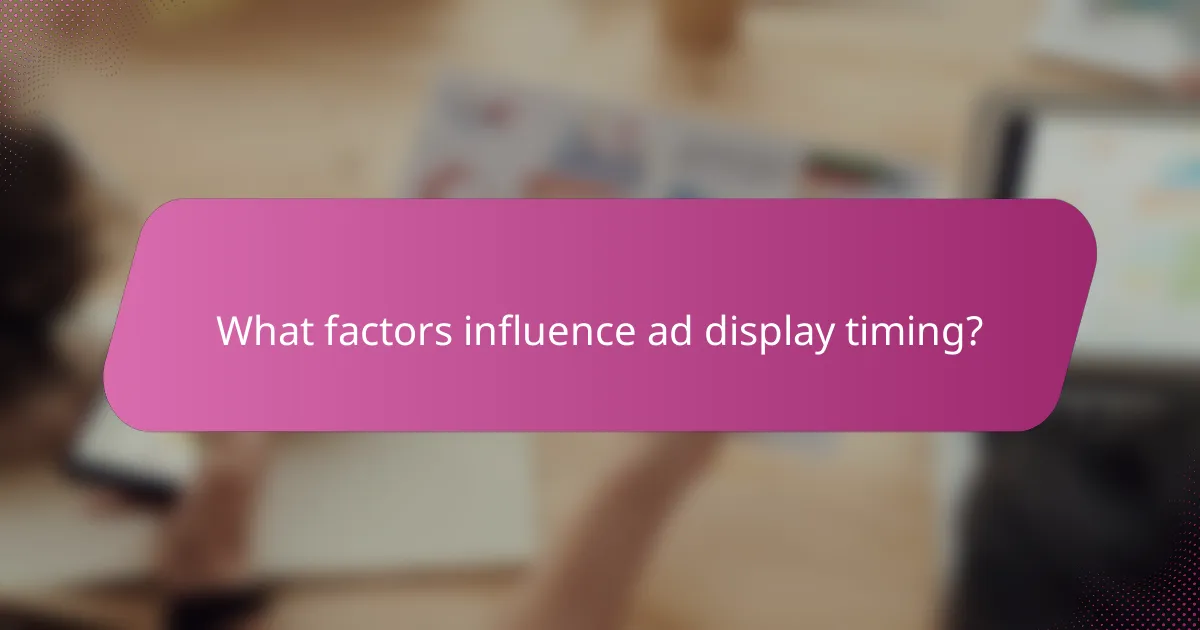
What factors influence ad display timing?
Ad display timing is influenced by various factors including audience demographics, user behavior, and seasonal trends. Understanding these elements can help optimize engagement and improve the effectiveness of advertising campaigns.
Demographics and user behavior
Demographics such as age, gender, and location significantly impact when users are most active online. For instance, younger audiences may engage more during late evenings, while professionals might be more active during lunch breaks or after work hours.
User behavior also plays a crucial role. Analyzing when your target audience interacts with content can reveal peak times for ad display. Tools like Google Analytics can help track user activity patterns, allowing for data-driven decisions on ad timing.
Seasonal trends affecting engagement
Seasonal trends can greatly influence audience engagement levels. For example, holiday seasons often see increased online activity, making it an ideal time for ad displays. Conversely, summer months may result in lower engagement as people spend more time outdoors.
Additionally, specific events or trends, such as back-to-school shopping or major sporting events, can create spikes in user activity. Adjusting ad timing to align with these seasonal trends can enhance visibility and engagement rates.

How can advertisers optimize ad timing?
Advertisers can optimize ad timing by analyzing audience behavior and engagement patterns to determine the most effective moments for ad display. This involves leveraging data insights and testing strategies to enhance visibility and interaction rates.
Using analytics tools for timing insights
Analytics tools provide valuable insights into when audiences are most active and engaged. By examining metrics such as click-through rates (CTR) and conversion rates during different times of day, advertisers can identify peak hours for their target demographics.
For instance, if data shows higher engagement on weekends for a specific product, advertisers can schedule their campaigns to run during those times. Tools like Google Analytics or social media insights can help track these patterns effectively.
A/B testing for effective timing strategies
A/B testing allows advertisers to experiment with different ad timings to see which yields better results. By running two versions of an ad—one displayed at peak hours and another at off-peak times—marketers can assess performance differences.
It’s essential to monitor key performance indicators (KPIs) such as engagement rates and sales conversions during these tests. This approach helps refine timing strategies based on real data, ensuring that ads reach audiences when they are most receptive.
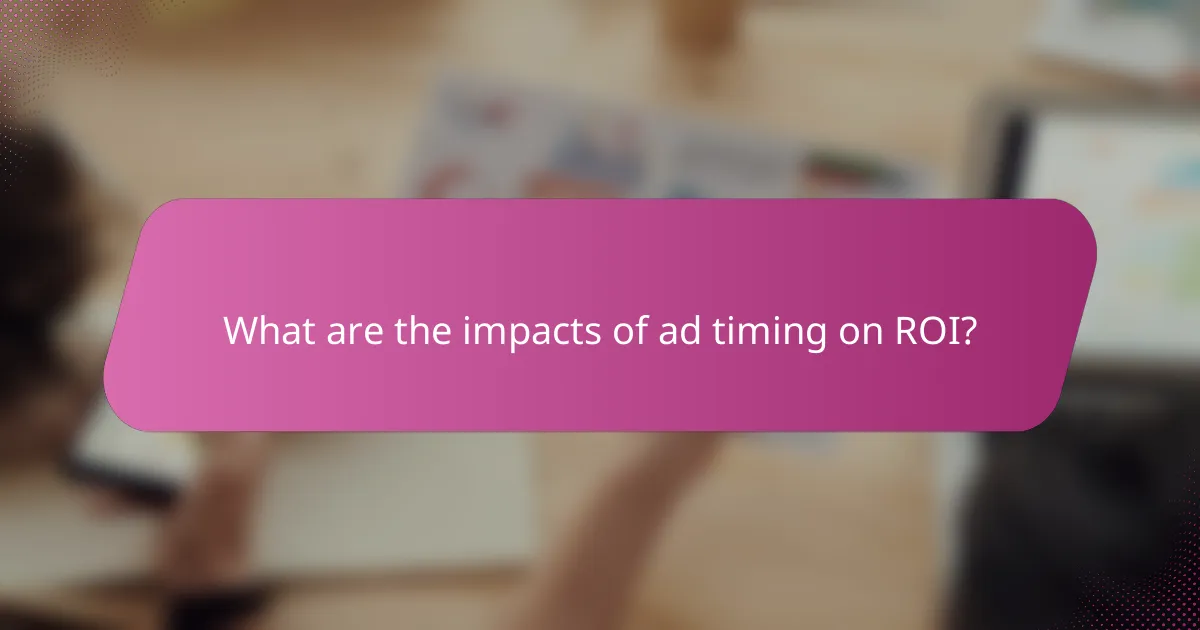
What are the impacts of ad timing on ROI?
Ad timing significantly influences return on investment (ROI) by affecting audience engagement and conversion rates. Properly timed ads can lead to higher visibility and interaction, ultimately boosting sales and brand awareness.
Correlation between timing and conversion rates
There is a strong correlation between ad timing and conversion rates, as ads displayed during peak engagement hours tend to perform better. For instance, research shows that ads shown in the early evening or during lunch breaks often yield higher click-through rates compared to those displayed late at night or early morning.
To optimize conversion rates, consider your target audience’s habits. For example, B2B audiences may engage more during weekdays, while B2C audiences might respond better on weekends. Testing different time slots can help identify the most effective periods for your specific market.
Case studies on timing optimization
Several companies have successfully optimized their ad timing to enhance ROI. One notable case involved a retail brand that shifted its ad campaigns to early evening hours, resulting in a 30% increase in online sales within three months. This adjustment aligned with the times when their target demographic was most active online.
Another example is a travel agency that analyzed booking patterns and found that ads displayed on Sunday afternoons led to a significant spike in inquiries. By focusing their advertising efforts during these peak times, they improved their lead generation by over 25%.
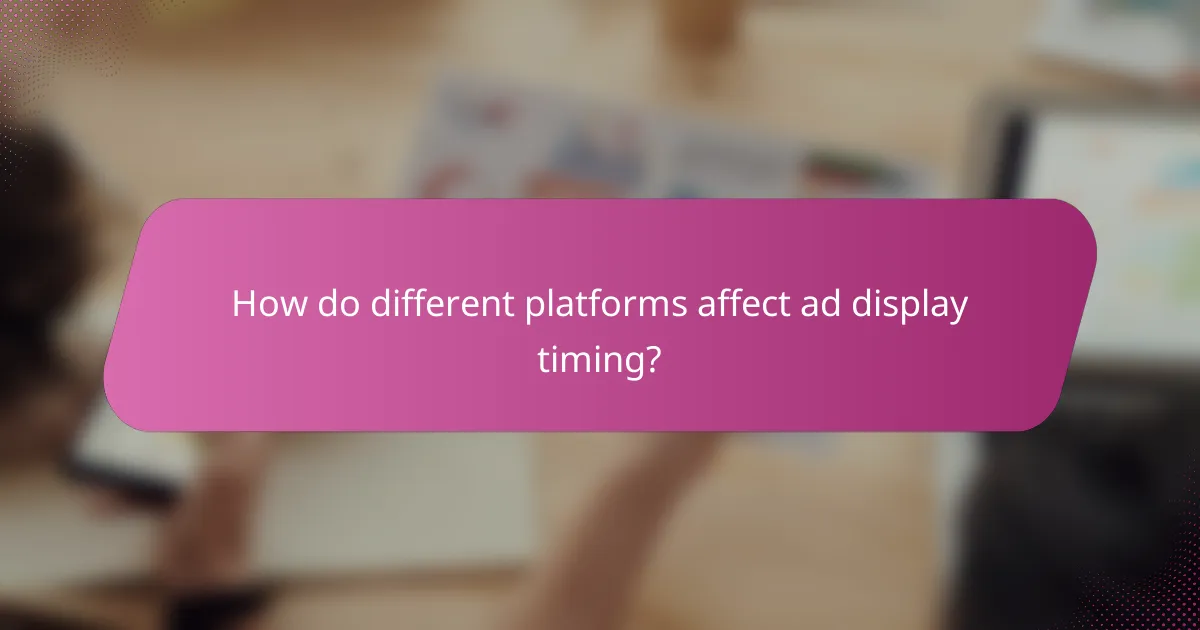
How do different platforms affect ad display timing?
Different platforms significantly influence ad display timing, as each has unique user behaviors and peak engagement hours. Understanding these differences helps optimize ad performance and reach the target audience effectively.
Timing strategies for Google Ads
Google Ads operates on a bidding system where timing can affect ad visibility and cost. Advertisers should consider running ads during peak search times, typically weekdays between 9 AM and 5 PM, when users are actively searching for products or services.
Utilizing dayparting strategies can enhance ad performance. For instance, if data shows higher conversion rates on weekends, allocate more budget to those days. Regularly analyze performance metrics to adjust timing based on user engagement trends.
Best practices for social media ad timing
Social media platforms like Facebook and Instagram have distinct peak hours for user engagement. Generally, evenings and weekends see increased activity, making them ideal for ad placements. Testing different times can help identify when your specific audience is most active.
Consider using scheduling tools to automate ad placements during these peak times. Avoid late-night ads unless targeting specific demographics known to be active during those hours. Monitor engagement rates closely to refine your timing strategy continuously.
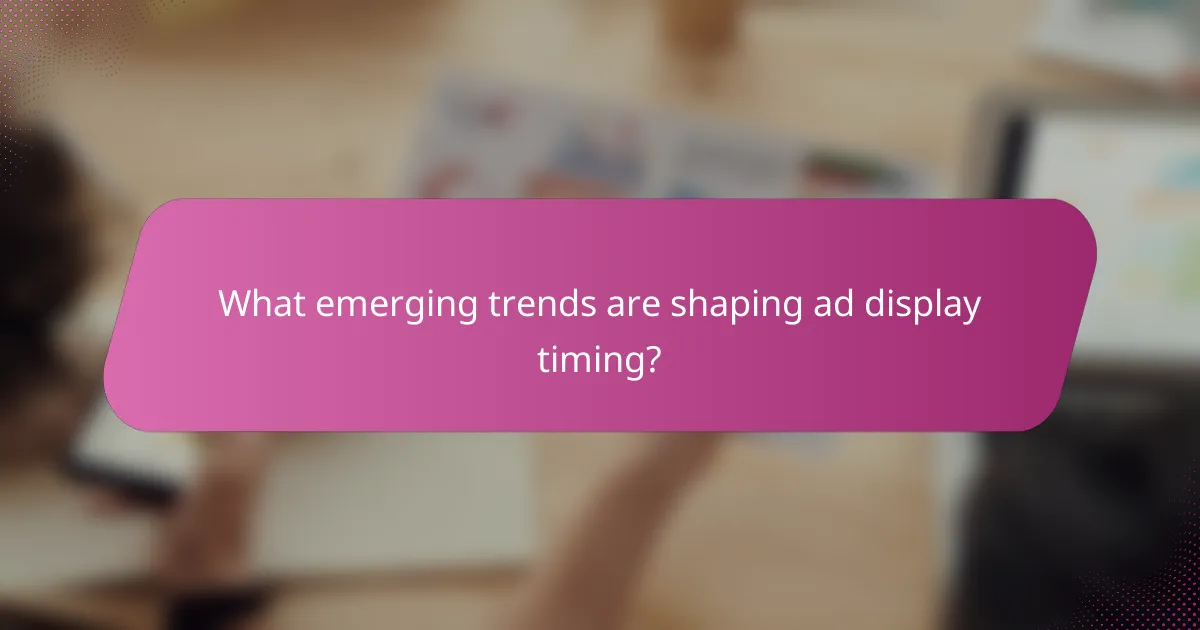
What emerging trends are shaping ad display timing?
Emerging trends in ad display timing are increasingly influenced by data analytics, audience behavior, and technological advancements. Marketers are focusing on optimizing ad delivery during peak engagement hours to maximize visibility and interaction.
Influence of AI on ad timing decisions
Artificial Intelligence (AI) is revolutionizing ad timing decisions by analyzing vast amounts of data to predict optimal display times. AI algorithms can assess user behavior patterns, identifying when specific audiences are most likely to engage with ads.
For example, AI can determine that a particular demographic engages more with ads during early evenings, allowing marketers to schedule their campaigns accordingly. This data-driven approach minimizes ad spend waste and enhances overall campaign effectiveness.
Future predictions for audience engagement patterns
Future predictions suggest that audience engagement patterns will continue to evolve with changing consumer habits and technological advancements. As remote work becomes more common, peak engagement times may shift, with increased activity during non-traditional hours.
Marketers should prepare for these shifts by continuously monitoring engagement analytics and adjusting their ad display strategies. Utilizing flexible scheduling tools can help ensure that ads reach audiences when they are most receptive, whether during lunch breaks or late evenings.
